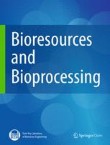Light repair effect of polysaccharides component from white Ganoderma lucidum and Laminaria japonica fermentation broth attenuates epidermal barrier dysfunction via TRPV4-Keap-1/Nrf2 pathway
Epidermal photoinflammation has emerged as an atypical pathological response that poses a growing global threat to human health and well-being. In this study, a polysaccharide component (named LJGp) was isolated from Laminaria japonica and white Ganoderma lucidum fermentation broth, and its reparative effects on UVB-induced epidermal damage were investigated. LJGp was found to restore the migration ability of HaCaT cells, increase antioxidant enzyme activities, and clear excessive intracellular ROS. Mechanistic results further showed that LJGp regulated the TRPV4-Keap-1/Nrf2 pathway, where UVB-induced TRPV4 activation suppressed Nrf2 activity and promoted AP-1–mediated inflammation. By reducing TRPV4 overexpression and restoring Nrf2 function, LJGp alleviated barrier dysfunction and improved epidermal repair. These results provide supporting data and a scientific basis for the development and utilization of LJGp as an epidermal photoinflammatory relief agent.
